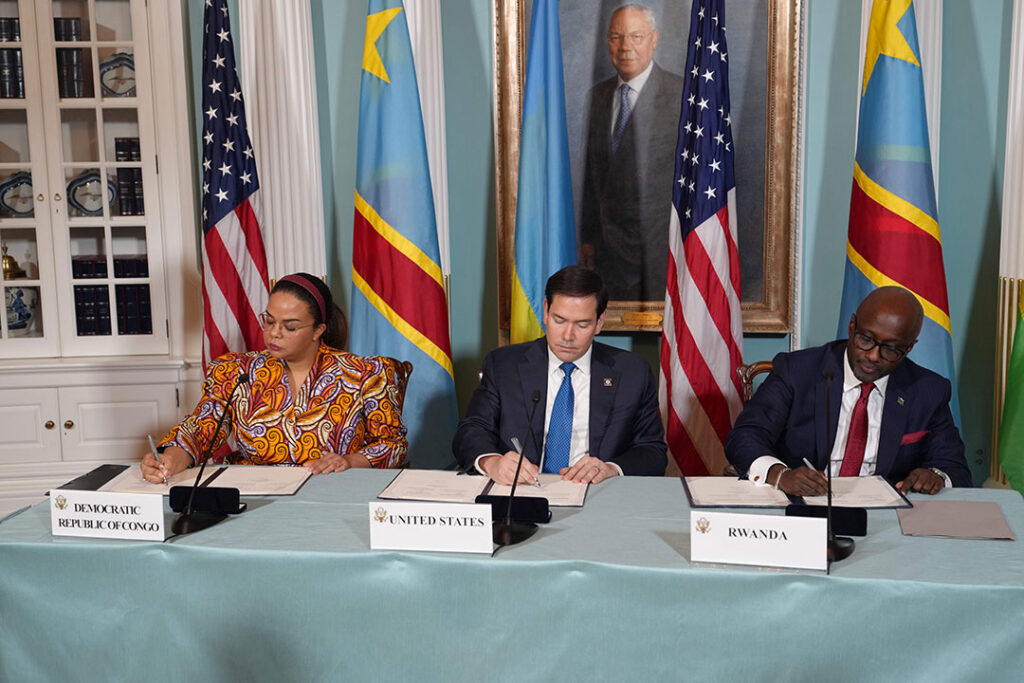Decades of armed conflicts in the eastern Democratic Republic of the Congo have produced a familiar cycle of hope for peace talks and disappointment when fighting continues.
After the Congolese government and Rwanda-backed M23 rebels agreed to a temporary ceasefire on April 23 in Qatar, it didn’t take long for renewed fighting to shatter the peace. But there is renewed hope, as the two sides continue to negotiate a broader deal.
“The situation has not changed, the fighting continues, and the humanitarian situation is as dramatic as ever in North and South Kivu,” Congolese Foreign Minister Thérèse Kayikwamba Wagner told the United Nations Security Council on April 16.
Since 2021, the two sides have agreed to at least six truces that later collapsed. M23’s latest offensive has killed at least 7,000, forced more than 1.1 million people from their homes and raised the specter of a wider regional war.
On May 4, M23 rebels seized the town of Lunyasenge on the west coast of Lake Edward. The Congolese armed forces (FARDC) confirmed that seven soldiers and 10 rebels died in clashes.
Negotiations restarted in Doha, Qatar on May 3, an official with knowledge of the talks told Reuters. “The negotiations are being held in a positive atmosphere, and both parties have expressed optimism about the dialogue,” the official said.
Experts such as Paul Nantulya, a researcher with the Africa Center for Strategic Studies, point to the region’s history of armed conflicts as a warning of the tests facing any peace negotiations.
“The multidimensionality of the DRC crisis makes it particularly challenging to resolve,” he wrote in an April 15 analysis. “In addition to these regional dimensions, the contested nationality and citizenship for Congolese of Rwandan and Burundian descent in eastern Congo is a major grievance that has fueled all major rebellions in the DRC.”
Analysts Yale Ford and Liam Carr predicted that peace talks would likely limit the scale of violence, but anticipated that continued fighting “will almost certainly continue.” They said the Congolese government’s mobilization of local armed groups called Wazalendo could undermine negotiations.
“Pro-government Wazalendo fighters and other anti-Tutsi militias are a significant obstacle to peace- and trust-building efforts — regardless of DRC-M23-Rwanda negotiations — because the militias are not involved in these talks, and the DRC is likely unable to control the militias,” they wrote in the May 1 edition of the Critical Threats Project’s Africa File.
Peace efforts have led to a decrease in fighting between Congolese troops and the thousands of Rwandan forces in eastern DRC, according to the Armed Conflict Location and Event Data, which reported in early April that Rwandan forces had stopped direct operations after the ceasefire. Wazalendo groups have continued attacking rebel positions in and around M23-held towns. M23’s attack on Lunyasenge, however, has mediators holding their collective breath while the parties continue their tenuous peace talks.
FARDC spokesperson Col. Mak Hazukay condemned the attack on Lunyasenge as an “intentional and blatant violation of the ceasefire and all measures put in place to follow the ongoing negotiations in Doha, Qatar, and Washington.”
The United States emerged as another mediating party when Wagner and her Rwandan counterpart, Olivier Nduhungirehe, signed an agreement in Washington on April 25, committing to respect each other’s sovereignty and refraining from providing military support to armed groups.
After a tense meeting in which the two did not shake hands, Wagner later said the deal amounted to a commitment for Rwandan forces to withdraw, as outlined in a U.N. Security Council resolution. The sides submitted separate drafts for a peace deal on May 2.
“The good news is there is hope for peace,” she told reporters. “The real news: peace must be earned, and it will require seriousness, transparency and sincerity.”

